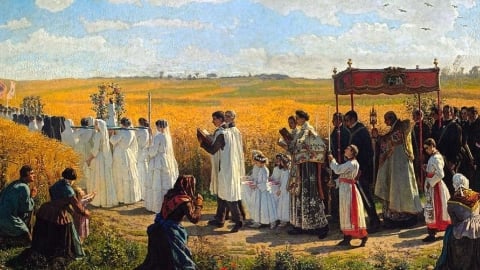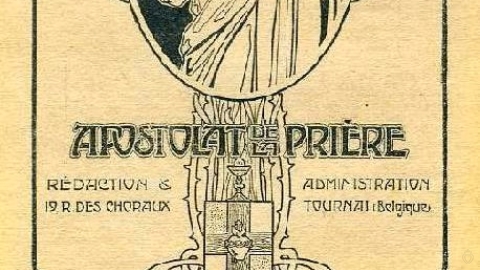Ignatian Year - The Spiritual Exercises and the Early Missions in India

The person and the apostolic methods of St. Francis Xavier cannot be understood without the Spiritual Exercises of St Ignatius. Not only did they decide his whole life, but they permeated all his missionary activities.
The decisive turn of St. Francis Xavier’s life at Paris, and the few years he lived in close contact with “his Father in Christi visceribus”, left a deep impact on his own spirituality. The Exercises is the only book - besides the Bible and the Breviary - which is quoted in his letters. In his prayers for the conversion of the infidels a clear hint is found of each of the four weeks and of the basic meditations of the Ignatian Exercises.
Another and more definite proof of the Ignatian spirituality of St. Francis Xavier is found in his letters, when he explains the motives which impel him to go from. India to Japan and from there to China: they are “the greater difficulty”, “the greater service of God”, in a word, the Rules of Election. It is worth noting that St. Francis Xavier used preferably the Second Time of Election. His soul was extremely sensitive to the touch of consolation and desolation, and he took his decisions accordingly. “From what I am experiencing in my soul, it seems to me that either I or somebody else of the Society will go to Japan in two years’ time”, thus he writes on Jan. 20th, 1548. And a year later, “When I got information about Japan, it took me a long time to decide whether I should go or not; but when God Our Lord was pleased to make me feel within my soul that my going there would be for His service, it seemed to me that I would be worse than the infidels of Japan, if I abandoned that plan.”
A man so deeply imbued with the spirituality of the Exercises had to show that spirit in his apostolic activity. His catechetical explanations bear a striking resemblance to the methods of prayer taught by St Ignatius, and his presentation of Christ follows the very frame of the Exercises. There is more than that. St. Francis Xavier’s ideal was to bring as many people as possible to make a retreat. He did so himself at Goa and asked the Fathers to do the same wherever they were. Unfortunately, not all shared his conviction about the usefulness of retreats. To understand their reluctance, we must bear in mind that in those days annual retreats were not yet in use, not even in the Society, and that the practice St. Francis Xavier tried to impose on St Paul’s College, at Goa, was not in force in our schools of Europe till some decades later.
Another difficulty was the lack of personnel. Hence his incessant appeals to Europe to send people, even such as were not able to do strenuous work but who could devote their lives to giving retreats. St. Francis Xavier used the retreat as a means of training catechists. The three Japanese who were to help him in the new mission of Japan made a full-month retreat, with such profit that “all those who are there”, writes St. Francis Xavier from Malaca, “would like to share in the virtues that God put in them”. Further St. Francis Xavier used to bring people to the practice of the Spiritual Exercises by giving them a copy of the three methods of prayer found at the end of the 4th Week. From them the future retreatant could learn mental prayer and grow able to draw great profit from the Exercises.
Among the collaborators or successors of St. Francis Xavier, four names must be mentioned: Berze, H. Henriques; Cabral and Jerome Xavier, the Saint’s grand-nephew.
As St Francis Xavier had founded the Retreat House of Goa, so Fr Berze started the same ministry at Ormuz. His extraordinary ability at giving retreats had been shown already during his journey to India. At Ormuz he gave the Exercises to the most influential people, ecclesiastical and civil officials, who afterwards became his most devoted collaborators.
In South India, Fr H. Henriques as early as 1557 opened a Retreat House for Jesuit missionaries, periodically to regain both corporal and spiritual strength, and Fr Cabral did the same in Bassein.
When in 1581 Fr Jerome Xavier arrived in India, retreats were again an unheard-of practice even among Jesuits and were rather looked down upon as a punishment. It required the great authority of Fr Jerome, as Novice Master and Rector of Bassein and Cochin, to overcome the opposition. In the Provincial Congregation of 1588, it was decided that the Fathers who were living alone in Mission stations should every year spend some days in one of the Colleges or in the villas attached to them, for corporal and spiritual rest. And the practice of some days of retreat was strongly recommended. Fr Jerome extended his zeal to out-siders also, especially clergy and seminarians. But when in 1594 Fr Jerome was sent to the Moghul Mission, the work he had promoted died out.
[Condensed from Fr Ignacio Iparraguirre's article “Los Ejercicios Espirituales Ignacianos, el metodo misional de S. Francisco Javier y la mission jesuitica de la India en el siglo XVI”, Studia Missionalia V (1950) pp. 3-43.]





